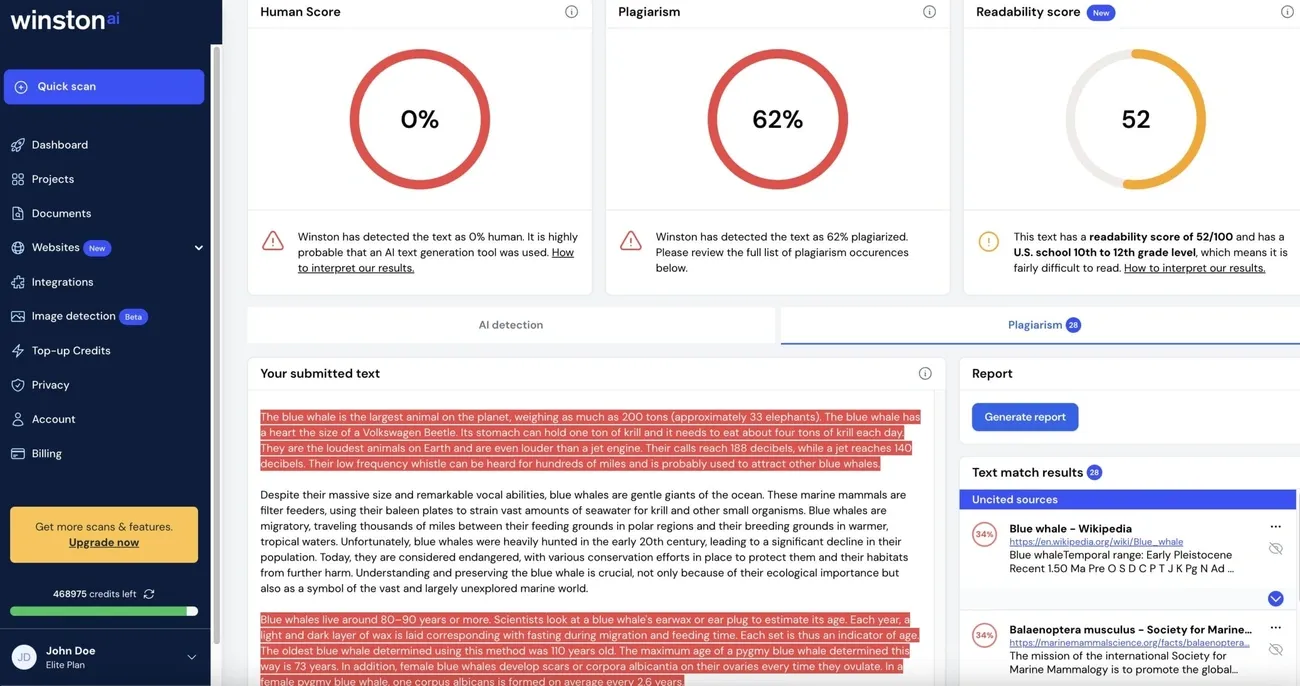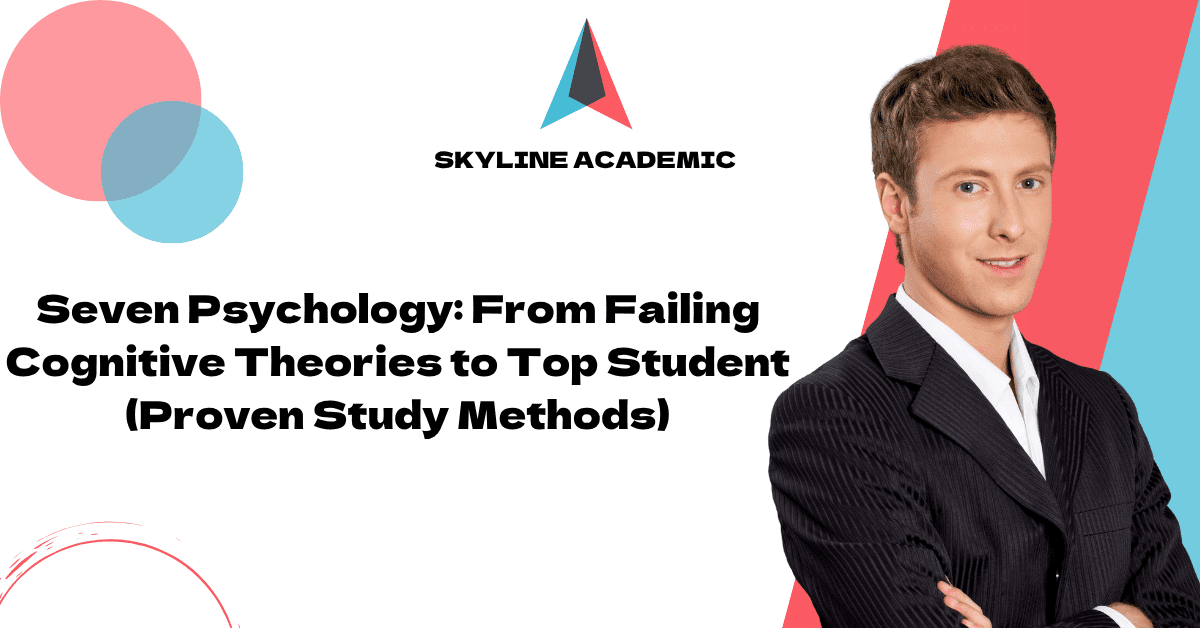Best Plagiarism Checker Guide For Your Academic Integrity
The right plagiarism checker can cut down academic misconduct by a lot during your academic trip. A 2020 study shows that direct action against academic misconduct led to a 37.01% drop in detected plagiarism across 12 semesters. These results show why plagiarism detection tools play a key role in keeping academic standards high.
Academic integrity’s foundation includes six core values from the International Center for Academic Integrity: honesty, trust, fairness, respect, responsibility, and courage. Students often break academic rules because they feel pressured about performance, tight deadlines, or they don’t know how to cite properly. You need good education about citations and reliable plagiarism software to stop copying. Skyline Academic and similar tools help spot problems and teach you the right way to handle academic writing rules.
In this piece, you’ll find ways to avoid plagiarism with proper citations. You’ll learn how online plagiarism checkers work and which free tools give you the most accurate results. We’ll get into what makes certain tools better and show how Skyline Academic matches up against popular choices like Turnitin and Grammarly.
What is plagiarism and why academic integrity matters
“Foster academic integrity in your classroom and teach students the importance of source citation.”
— GPTZero, AI detection and plagiarism checking platform
You need to understand plagiarism to succeed in academics. When you present someone else’s words, ideas, or work as your own without proper credit, it’s plagiarism. This intellectual theft can seriously impact your academic experience.
Definition of plagiarism
Plagiarism covers many forms of academic dishonesty beyond simple copy-pasting. The word “plagiarism” comes from the Latin word for “kidnapper” and represents theft of intellectual property [1]. You commit plagiarism when you think over using someone else’s language, ideas, or original material without acknowledging its source [1]. This has several forms:
- Direct plagiarism: Copying text word-for-word without quotation marks
- Mosaic plagiarism: Mixing content from different sources with minimal word changes [2]
- Self-plagiarism: Using your previous work again without citing it
The consequences apply even when you don’t mean to plagiarize. Sloppy note-taking or mixing up sources with your ideas can lead to academic violations [2].
Difference between plagiarism and academic integrity
People often mix these terms up, but plagiarism is just one part of academic integrity violations. Academic integrity has six core values: honesty, trust, fairness, respect, responsibility, and courage [3]. It means doing your studies and research ethically, making good choices, and showing integrity in everything you do [3].
Plagiarism fits under the bigger picture of academic dishonesty [4]. You need to do more than avoid plagiarism to maintain academic integrity. Your work should be thorough, complete, and focused on real learning [4].
Why students plagiarize
Students don’t just plagiarize because they’re dishonest. Research shows 86.7% of students admit to plagiarizing because they feel pressured to get good grades. About 84.9% blame it on being lazy and managing time poorly [5]. The same number say they lack proper academic writing skills [5].
Students also plagiarize because:
- They fear failing or taking chances with their own work [6]
- They don’t see assignments or citation rules as important [6]
- Their notes are messy and sources get mixed up [6]
- Work and family responsibilities create pressure [5]
- They don’t fully understand citation requirements [7]
Skyline Academic’s plagiarism tools do more than spot problems. They help you learn proper citation practices. Unlike other tools, you get detailed feedback that teaches you instead of just pointing out issues.
A solid grasp of plagiarism and better academic writing skills will help you maintain academic integrity throughout your academic experience.
How to prevent plagiarism in academic writing
Plagiarism prevention needs well-planned strategies and proper education about academic writing practices. Research shows that authentic assessment methods boost student learning outcomes and intrinsic motivation substantially, while reducing academic dishonesty [8].
Teach proper citation and referencing
You build credibility with your audience by becoming skilled at citation methods. Academic fields of all types use citation styles like MLA, APA, and Chicago [9]. Your research should capture these key details:
- For books: author, title, publisher, publication year
- For articles: author, title, publication name, volume, date, page numbers
- For websites: author, page title, URL, access date [9]
Skyline Academic’s plagiarism detection tools detect citation issues and offer educational guidance on proper formatting—something that sets it apart from other tools.
Encourage paraphrasing and summarizing
The art of paraphrasing puts source material into your words while crediting original authors [10]. Keep in mind that changing few words doesn’t work—you need to reshape both wording and sentence structure [11]. A good summary captures main ideas in your words and makes the original content shorter [10].
The quickest way to paraphrase includes:
- Read the material until you grasp it fully
- Put the original aside and write your version
- Compare your work with the original
- Quote unique phrases that resist change
- Credit your source always [12]
Support time management and planning
Poor planning guides students toward last-minute work and plagiarism. Studies show students resort to plagiarism due to grade pressure (86.7%) and poor time management (84.9%) [13]. Early starts help you understand material better and give time to ask instructors questions before deadlines [14].
Use authentic assessments
Authentic assessments test applied skills rather than just knowledge retention. These tests focus on critical thinking, personal views, and self-reflection—elements that AI struggles to copy convincingly [13]. Research indicates that interactive authentic assessment tasks cut down academic misconduct substantially [16].
Skyline Academic distinguishes itself from other plagiarism checkers. It helps educators create authentic assessments that naturally prevent plagiarism through personalization and critical thinking requirements.
Top 5 plagiarism checkers for students and educators

Image Source: Winston AI
The right plagiarism detection tool can make or break your efforts to maintain academic integrity. Let’s look at five leading options that help students and educators spot potential academic misconduct.
1. Turnitin
Turnitin serves as the life-blood of academic plagiarism detection and caters to educational institutions. Its detailed database spans billions of web pages, scholarly content, and student papers, giving users a unique coverage. The platform excels at catching different types of plagiarism—from direct copying to synonym swapping and AI-generated content. Tests show Turnitin caught 99% of copied content in texts with letter replacements. You’ll need to contact them directly for pricing, but most universities give access through their learning management systems.
2. Grammarly
Grammarly does more than check grammar. The platform has a resilient plagiarism detection system that checks text against 16 billion web pages and ProQuest’s academic databases. Users get an originality score and source references for flagged content. Live feedback helps writers fix issues as they write. Research shows 94% of students report better grades with Grammarly Pro [17]. The free version tells you if plagiarism exists, while the premium plan ($12/month) shows exact passages and sources.
3. Skyline Academic
Skyline Academic stands out with its precision and focus on education. The platform goes beyond flagging problems and gives detailed feedback to help students learn proper citation methods. Teachers can create authentic assessments that naturally prevent plagiarism through personalization. The platform comes with competitive pricing and top-notch detection features to protect academic integrity.
Skyline Academic delivers competitive pricing and exceptional plagiarism detection tools. Skyline Academic ranks among the best solutions to protect academic integrity.
4. Scribbr
Scribbr shines when checking different source types, especially with heavily edited texts that look like accidental paraphrasing. The tool catches plagiarism better than many others, particularly in edited content [18]. Color-coded downloadable reports make assessment easy. Users pay per check ($19.95–$39.95 based on word count) instead of subscribing. Scribbr offers a self-plagiarism checker—something unique in the market. The platform protects user privacy by never storing or selling submitted documents.
5. Plagscan
Plagscan uses a sophisticated two-step algorithm to find similarities in uploaded content. The system works with multiple file formats and lets users compare texts side by side. Detailed reports highlight duplicated text, and users can work together through interactive browser reports. Pay-per-use pricing runs from $5.99 for 6,000 words to $49.99 for 100,000 words [19]. The tool works great with human-written text but doesn’t deal very well with AI-generated content.
How to use plagiarism detection tools effectively
“Get an originality score for your document to see how unique your ideas are.”
— Grammarly, Leading AI writing assistant company specializing in grammar checking and plagiarism detection
Using plagiarism detection tools takes more than just running a document through software. The best online plagiarism checkers are a great way to get educational value rather than just catch cheating.
Understand what similarity scores mean
Similarity scores show how much of your text matches other sources [2]. These numbers don’t prove plagiarism by themselves – they’re just starting points. Most plagiarism detection tools use color-coding to show matching levels:
- Blue: No matching text
- Green: 1-24% matching text
- Yellow: 25-49% matching text
- Orange: 50-74% matching text
- Red: 75-100% matching text [2]
High scores can come from proper citations, references, or common phrases [1]. Low scores don’t guarantee original work – even 10% similarity with one source needs a closer look [20]. Skyline Academic’s detection system gives you the context to understand these details and helps you read results correctly.
Use draft submissions for learning
Run your drafts through plagiarism tools before final submission to improve your citation skills. This turns these tools from punishment into learning resources [21]. You can submit unlimited drafts to check and fix citation issues before deadlines [22]. Students who get feedback through multiple draft submissions grow more confident and less likely to plagiarize [22].
Combine tools with manual review
Human judgment should always play a role. Even iThenticate, one of the most advanced systems, should add to careful reading rather than replace it [23]. To cite an instance, see how plagiarism detection software can’t understand field-specific citation rules [24]. The best results come from using both technology and subject-matter expertise to get a full picture.
To get excellent plagiarism detection value, you might want to try Skyline Academic’s detailed suite of tools at skylineacademic.com.
Avoid over-reliance on software
Note that plagiarism detection tools can give you a “false sense of accuracy” [24]. They find similar text but can’t make smart decisions about academic integrity. These systems sometimes flag non-native English speakers’ work as plagiarized incorrectly [4]. The numbers should guide your evaluation, not make final decisions [1].
Conclusion
Academic integrity needs knowledge and the right tools. This piece shows how plagiarism goes beyond simple copying. It includes mosaic plagiarism, self-plagiarism, and accidental violations. Without doubt, knowing these differences helps you create authentic work and develop proper citation habits.
You can’t rely on just one strategy to prevent plagiarism. Become skilled at proper citation techniques for your field. Build strong paraphrasing skills by understanding material before you rewrite it. Good time management helps avoid last-minute shortcuts. A reliable plagiarism detection software like Skyline Academic should check your work before submission.
Your plagiarism checker should be accurate, educational, and easy to use. Many options exist, but Skyline Academic stands out. It gives detailed feedback that teaches proper citation instead of just flagging issues. On top of that, it offers competitive pricing and exceptional detection capabilities. Students committed to academic honesty will find it an ideal choice.
Note that plagiarism detection tools serve best as educational resources, not punitive measures. Submit your drafts early to fix citation issues before final deadlines. Similarity scores should start your investigation, not end it. Using technology with a solid grasp of academic integrity principles builds writing habits. These habits will serve you well throughout your educational experience and professional career.
FAQs
Q1. What is the most effective plagiarism checker for academic papers?
For academic papers, Turnitin is widely considered the most effective plagiarism checker. It has an extensive database covering billions of web pages, scholarly content, and student papers. Turnitin is particularly adept at detecting various forms of plagiarism, including direct copying, paraphrasing, and even AI-generated content.
Q2. How can students prevent plagiarism in their academic writing?
To prevent plagiarism, students should master proper citation techniques, develop strong paraphrasing skills, manage their time effectively, and use reliable plagiarism detection software. It’s also helpful to submit drafts early for feedback and to thoroughly understand the material before attempting to rewrite it in your own words.
Q3. Are plagiarism checkers 100% accurate in detecting copied content?
No plagiarism checker is 100% accurate. While tools like Turnitin and Grammarly are highly effective, they should be used as part of a broader approach to maintaining academic integrity. It’s important to combine technological scanning with manual review and subject-matter expertise for thorough assessment.
Q4. How should students interpret similarity scores from plagiarism checkers?
Similarity scores indicate the percentage of text in your submission that matches other sources. However, these scores alone don’t determine plagiarism. High scores can result from legitimate citations or common phrases, while low scores don’t guarantee originality. It’s crucial to review the context of matches rather than fixating on the numerical score.
Q5. Can students access professional plagiarism checking tools for free?
Many educational institutions provide free access to professional plagiarism checking tools like Turnitin through their learning management systems. Some tools, like Grammarly, offer limited free versions. Additionally, there are free alternatives like Quetext, though they may have limitations compared to paid professional tools.
References
[1] – https://teaching.resources.osu.edu/toolsets/carmencanvas/guides/turnitin/turnitin-best-practices
[2] – https://guides.turnitin.com/hc/en-us/articles/23435833938701-Understanding-the-similarity-score
[3] – https://www.monash.edu/student-academic-success/maintain-academic-integrity/what-is-academic-integrity-and-why-is-it-important
[4] – https://www.yomu.ai/blog/maximizing-research-integrity-the-importance-of-ai-detection-tools-in-academic-research
[5] – https://edintegrity.biomedcentral.com/articles/10.1007/s40979-018-0029-6
[6] – https://www.kent.edu/writingcommons/causes-plagiarism
[7] – https://kappanonline.org/cleary-top-10-reasons-students-plagiarize/
[8] – https://www.montclair.edu/itds/digital-pedagogy/pedagogical-strategies-and-practices/authentic-assessment/
[9] – https://library.uaf.edu/instruction/readings/citing-documenting-resources
[10] – https://owl.purdue.edu/owl/research_and_citation/using_research/quoting_paraphrasing_and_summarizing/index.html
[11] – https://www.plagiarism.org/article/preventing-plagiarism-when-writing
[12] – https://guides.library.jhu.edu/avoidingplagiarism/paraphrasing_summarizing
[13] – https://services.gvsu.edu/TDClient/60/Portal/KB/PrintArticle?ID=24911
[14] – https://guides.library.ucla.edu/citing/plagiarism/avoid
[16] – https://www.turnitin.com/blog/what-is-authentic-assessment-bringing-authentic-assessment-to-life
[17] – https://www.grammarly.com/plagiarism-checker
[18] – https://www.scribbr.com/plagiarism/best-plagiarism-checker/
[19] – https://paperpal.com/blog/news-updates/industry-insights/7-best-plagiarism-checkers-in-2024-compared
[20] – https://blog.scholasticahq.com/post/research-integrity-toolkit-plagiarism-detection/
[21] – https://teaching.pitt.edu/resources/strategies-to-address-cheating-in-online-courses/
[22] – https://www.turnitin.com/blog/how-to-fight-plagiarism-and-uphold-pedagogy-with-unlimited-submissions
[23] – https://pmc.ncbi.nlm.nih.gov/articles/PMC8436797/
[24] – https://themarkup.org/machine-learning/2024/01/10/plagiarism-detection-tools-offer-a-false-sense-of-accuracy



